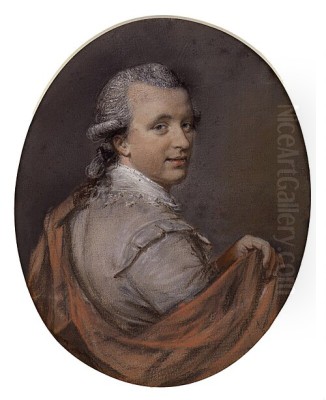
Hugh Douglas Hamilton stands as one of the most accomplished Irish artists of the latter half of the 18th century. Primarily celebrated for his exquisite portraiture, particularly in pastels during his early career, Hamilton navigated the artistic worlds of Dublin, London, and Italy, leaving behind a legacy of sensitive likenesses and technically brilliant works. His journey reflects the ambitions and opportunities available to talented artists in the Georgian era, moving between national capitals and the irresistible draw of the Grand Tour's artistic heartland.
Early Life and Artistic Formation in Dublin
Born in Dublin around 1739 or 1740, Hugh Douglas Hamilton hailed from modest beginnings on Crow Street. His father was variously described as a peruke maker or a felt-hat maker, placing the family within the city's artisan class. Despite this background, young Hamilton displayed a clear aptitude for art, leading him to enroll in the Dublin Society's Drawing Schools. This institution was a crucial incubator for artistic talent in Ireland at the time.
Under the tutelage of Robert West, master of the Figure School, and possibly James Mannin of the Landscape and Ornament School, Hamilton honed his skills in drawing and observation. The curriculum emphasized copying from prints and casts, providing a solid foundation in academic principles. Hamilton quickly excelled, winning prizes in competitions as early as 1755 and 1756, signaling his emerging talent to the Dublin art community.
During these formative years, Hamilton began to specialize in small-scale oval portraits executed in chalk and pastel. This medium suited his delicate touch and ability to capture a sitter's likeness with refinement and charm. His burgeoning reputation attracted patronage from influential figures, notably the La Touche banking family, whose support would prove valuable throughout his career. This early success in Dublin laid the groundwork for his future ambitions.
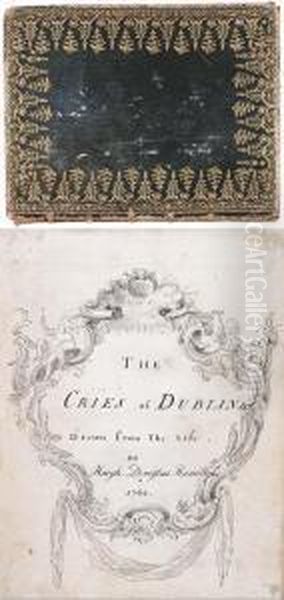
Beyond formal portraiture, Hamilton also engaged with the life of his native city in a more direct way. Around 1760, he produced a series of drawings known as "The Cries of Dublin." These works depicted the city's street vendors and characters, offering a vivid glimpse into the everyday life of the urban poor. Though perhaps less refined than his society portraits, the "Cries" demonstrate Hamilton's keen eye for observation and his interest in diverse subject matter, standing as important social documents of their time.
Success and Sophistication in London
Around 1764, seeking broader opportunities and a larger stage, Hugh Douglas Hamilton relocated to London. This move placed him at the vibrant center of the British art world, a highly competitive environment dominated by figures like Sir Joshua Reynolds and Thomas Gainsborough. Hamilton, however, carved out a distinct niche for himself, leveraging his mastery of pastel portraiture.
His small, elegant oval pastel portraits quickly found favour among London's elite. The medium itself was fashionable, and Hamilton's skill in rendering likenesses with sensitivity and grace was exceptional. He possessed a remarkable ability, noted by contemporaries, to capture a satisfactory portrait in a single sitting, an efficiency that undoubtedly appealed to busy clients. His studio became a popular destination for royalty, politicians, aristocrats, and celebrities seeking fashionable likenesses.
During his London period, which lasted until the late 1770s, Hamilton exhibited works, primarily pastels, at venues like the Society of Artists and the Free Society of Artists. His success was acknowledged early on when, in February 1764, shortly after his arrival, he received a premium or medal from the Society of Arts, Manufactures and Commerce, recognizing the quality of his work.
His clientele included members of the Royal Family, prominent politicians, and leading figures in society and the arts. While direct collaborations might be scarce in records, he operated within a milieu that included renowned portraitists like George Romney, Johan Zoffany, and fellow Irishman Nathaniel Hone the Elder. Hamilton's style, characterized by its delicate finish and intimate scale, offered a distinct alternative to the grander oil portraits favoured by Reynolds. His political neutrality also broadened his appeal, allowing him to attract patrons from across the social and political spectrum.
The London years solidified Hamilton's reputation as a leading portraitist in pastel. Anecdotes from the period, perhaps apocryphal but indicative of his success, suggest his studio floor was sometimes littered with the guineas paid by eager clients, so busy was he with commissions. This period represents the peak of his work in pastel before his artistic focus began to shift during his subsequent move to Italy.
The Italian Sojourn: Rome and Florence
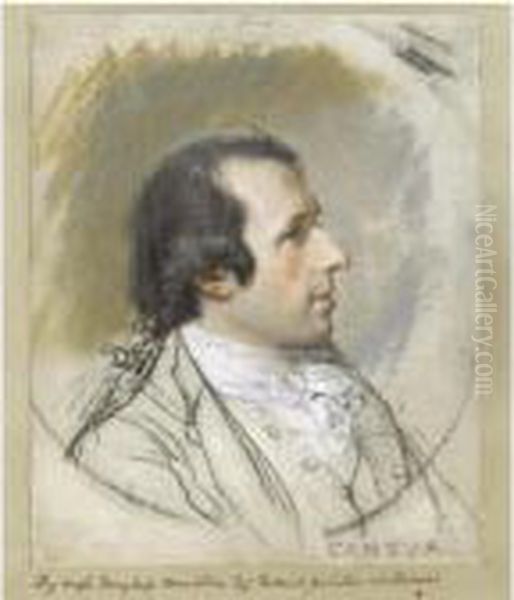
In 1778 or 1779, drawn by the allure of classical antiquity and the Renaissance masters, Hugh Douglas Hamilton embarked on the next major phase of his career, travelling to Italy. He initially settled in Rome, the ultimate destination for artists on the Grand Tour, before also spending significant time in Florence. This period, lasting until 1791 or 1792, marked a significant transformation in his artistic practice.
While he continued to execute portraits, particularly for the numerous British and Irish Grand Tourists visiting Italy, Hamilton increasingly turned his attention to oil painting. Encouraged by fellow artists and perhaps seeking the greater permanence and prestige associated with oils, he began to adapt his refined style to the new medium. His Italian oil portraits often retain the sensitivity of his pastels but adopt a slightly firmer handling and sometimes incorporate Neoclassical elements absorbed from the Roman environment.
In Rome, Hamilton moved within artistic circles that included prominent Italian and expatriate artists. He established a notable friendship with the leading Neoclassical sculptor Antonio Canova, whose portrait Hamilton painted on at least three occasions. This connection underscores Hamilton's integration into the highest levels of the Roman art world. He would also have been aware of the work of other major figures active in Rome during this period, such as Pompeo Batoni, Anton Raphael Mengs, Angelica Kauffman, and the visiting Jacques-Louis David, whose Neoclassical style was revolutionizing European art.
His sitters in Italy included exiled members of the Stuart dynasty, such as Charles Edward Stuart (the 'Young Pretender') and his brother Henry Benedict Stuart (Cardinal Duke of York). He also painted portraits of important diplomats and officials, like Sir William Hamilton (the British Envoy to Naples, famous collector and volcanologist) and potentially Sir John Acton, Prime Minister of Naples. These commissions reflect his continued high standing and his ability to attract patronage from influential figures abroad.
Hamilton's time in Florence further broadened his exposure to Italian art. He continued to work prolifically, adapting his portrait style and occasionally venturing into historical or mythological subjects, though portraiture remained his primary focus. The Italian years were crucial for Hamilton's development, pushing him beyond the pastel medium in which he had first made his name and aligning his work more closely with the prevailing Neoclassical tastes of the era.
Return to Dublin and Later Career
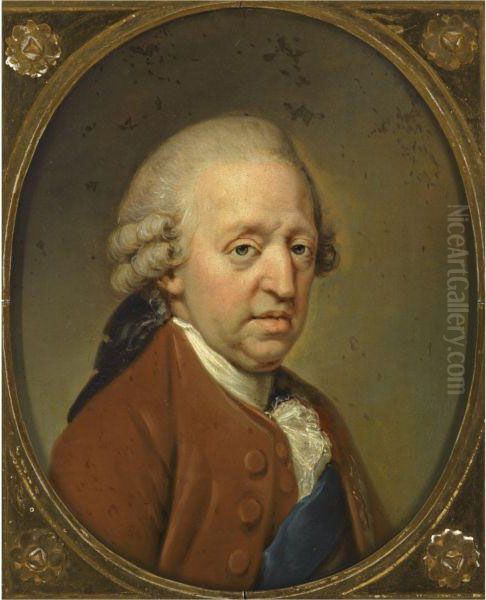
In 1791 or 1792, after more than a decade in Italy, Hugh Douglas Hamilton returned to his native Dublin, accompanied by his wife Mary and their daughter Harriot. He re-established himself in the city, now as a mature artist with international experience and a reputation enhanced by his time abroad. His focus was now firmly on oil portraiture, bringing a sophisticated, subtly Neoclassical style back to the Irish capital.
He quickly resumed his position as a leading portrait painter in Dublin. His refined technique, honed in Italy, was well-suited to capturing the likenesses of the city's prominent citizens, including politicians, peers, and members of the professional classes. He worked from various addresses in the city center, including Clare Street and later Merrion Square, fashionable locations reflecting his status.
His later oil portraits often display a smooth finish, careful attention to detail in costume and setting, and a continued sensitivity in capturing the sitter's character. While perhaps lacking the sheer bravura of some London contemporaries, his work possessed an understated elegance and psychological insight. He continued to receive important commissions, contributing significantly to the visual record of Irish society in the turbulent years leading up to and following the 1798 Rebellion and the Act of Union in 1800.
Despite his success, the Dublin art scene was smaller and perhaps less dynamic than London or Rome. However, Hamilton remained a respected figure. He was associated with attempts to establish formal art institutions in Dublin, reflecting a desire to elevate the status of the arts in Ireland. He continued painting actively until shortly before his death.
Hugh Douglas Hamilton passed away in Dublin on February 10, 1808. He left behind a substantial body of work, primarily portraits, that charts his artistic journey from the delicate pastels of his youth to the polished oils of his maturity. His career spanned significant shifts in artistic taste, from the Rococo charm of his early work to the Neoclassical sobriety evident in his later portraits.
Artistic Style and Technique
Hugh Douglas Hamilton's artistic identity is strongly tied to his mastery of pastel, particularly during the first half of his career. Working primarily on grey or off-white paper laid on canvas, he used black, white, and coloured chalks with exceptional skill. His technique involved delicate blending and stumping to achieve smooth tonal transitions, especially in rendering flesh tones, while often using sharper, more linear strokes for details like hair and fabric. The characteristic oval format he frequently employed enhanced the intimate and jewel-like quality of these works.
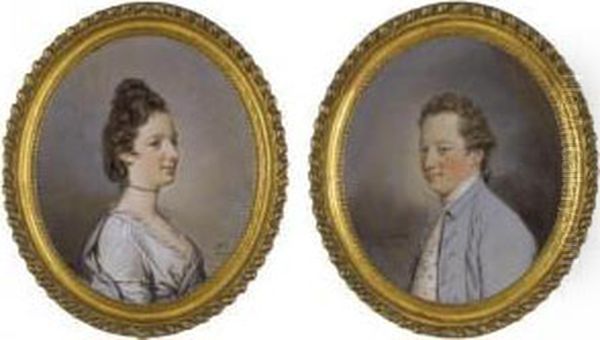
His ability to capture a likeness quickly and accurately was renowned. This suggests a confident draughtsmanship underpinning the delicate surface finish. His pastels are noted for their subtle characterization, capturing a sense of the sitter's personality without resorting to caricature or excessive flattery. The overall effect is one of elegance, refinement, and sensitivity. Artists like the French pastel master Maurice Quentin de La Tour or the Swiss Jean-Étienne Liotard were exploring similar territory in the medium on the continent.
The transition to oil painting during his Italian period marked a significant stylistic shift. While aiming for the greater gravitas of oil, Hamilton often retained the smooth finish and careful modelling characteristic of his pastels. His Italian and later Dublin oil portraits show the influence of Neoclassicism in their clarity of form, restrained colour palettes, and often simpler compositions compared to the more flamboyant Rococo styles. His handling of paint is typically controlled and blended, lacking the visible, energetic brushwork seen in contemporaries like Gainsborough or later, Sir Thomas Lawrence.
Throughout his career, Hamilton demonstrated a consistent ability to render fabrics and accessories with meticulous detail, adding to the richness and realism of his portraits. Whether working in pastel or oil, his primary goal remained the faithful and sensitive depiction of his sitter. His "Cries of Dublin" series stands apart, showcasing a more robust, less idealized approach suited to their subject matter, demonstrating his versatility.
Key Works and Subjects
Several works stand out in Hugh Douglas Hamilton's oeuvre, representing different phases and aspects of his career.
The "Cries of Dublin" (c. 1760) are significant early works. This series of chalk drawings captures the energy and hardship of Dublin's street life. Depicting vendors selling milk, vegetables, or fish, alongside beggars and other characters, these images offer invaluable social documentation. Stylistically, they are more direct and less polished than his society portraits, showing a different facet of his observational skill.
His numerous oval pastel portraits from the Dublin and London periods (c. 1750s-1770s) collectively represent a major achievement. Specific examples include portraits of members of the La Touche family, his early patrons, and various society figures whose identities are sometimes now lost. These works epitomize his delicate style and mastery of the medium, characterized by their soft finish and intimate scale. A fine example is the portrait of David La Touche, showcasing the artist's ability to convey both likeness and status.
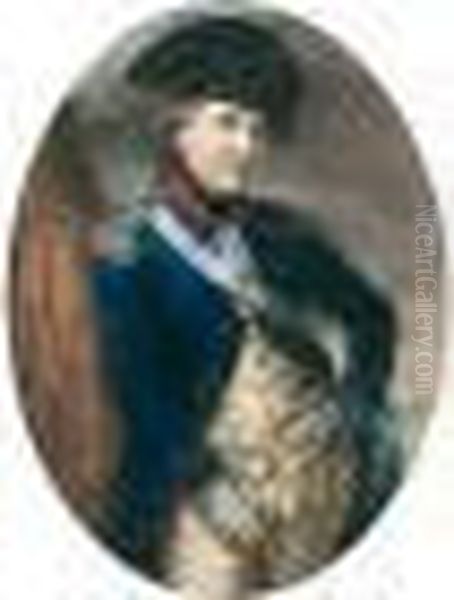
Portraits from his Italian period (1779-1791) demonstrate his shift to oils and engagement with Neoclassicism. His portraits of the sculptor Antonio Canova are particularly important, documenting his friendship with the leading artist of the era. These works show Canova with a thoughtful, intense expression, rendered with a clarity and solidity typical of Hamilton's Italian style. Portraits of Grand Tourists and expatriates, such as Frederick Hervey, the Earl-Bishop of Derry, or members of the exiled Stuart court in Rome, also date from this period.
Upon his return to Dublin, Hamilton produced many significant oil portraits of the Irish elite. A prominent example is his full-length portrait of William Brabazon Ponsonby, later 1st Baron Ponsonby, depicted as Speaker of the Irish House of Commons (c. 1789, though possibly finished after return). Another key work is the portrait of Arthur Wolfe, 1st Viscount Kilwarden, the Lord Chief Justice of Ireland, painted shortly before Kilwarden's tragic death during Robert Emmet's rebellion in 1803. These later works showcase his mature oil technique, combining formal dignity with perceptive characterization. The portrait of the 2nd Duke of Leinster is another significant aristocratic commission from his career.
Legacy and Influence
Hugh Douglas Hamilton holds a secure place as one of Ireland's most important 18th-century artists. His primary contribution lies in the field of portraiture, where he excelled first in pastels and later in oils. He was arguably the leading Irish pastelist of his generation, achieving a level of refinement and popularity in the medium that rivaled many of his British and Continental contemporaries.
His career trajectory – from Dublin, to London, to Italy, and back to Dublin – reflects the path taken by many ambitious artists of the period seeking training, patronage, and exposure to the wider European art world. His success in each location speaks to his talent and adaptability.
While perhaps not a radical innovator in the manner of Reynolds or Gainsborough, Hamilton perfected a style of portraiture characterized by sensitivity, elegance, and technical accomplishment. His work provides an invaluable visual record of Georgian society in Ireland, England, and among the Grand Tour community in Italy.
His influence on subsequent generations of Irish artists may have been limited, partly due perhaps to his focus on a refined, less dramatic style than came into vogue in the Romantic era. However, his work remained respected. The rediscovery and appreciation of his "Cries of Dublin" series in the 20th century added another dimension to his reputation, highlighting his skills in observation and social commentary.
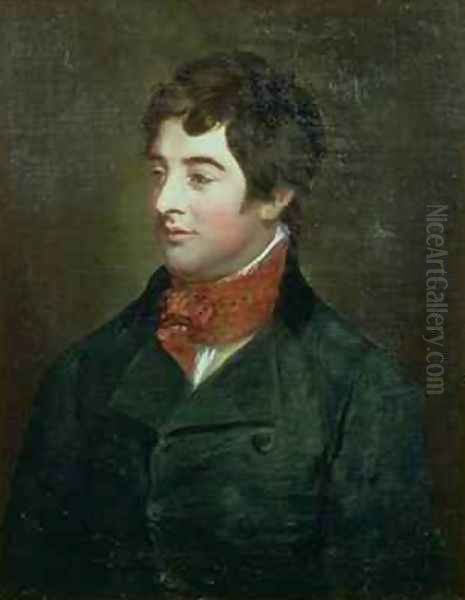
Renewed scholarly interest in Hamilton culminated in a major retrospective exhibition, "Hugh Douglas Hamilton: A Life in Pictures," held at the National Gallery of Ireland in 2008. This exhibition brought together a significant number of his works, allowing for a comprehensive reassessment of his career and confirming his status as a key figure in the history of Irish art. His paintings and pastels are now held in major collections in Ireland, the UK, and internationally.
Conclusion
Hugh Douglas Hamilton's life and work offer a fascinating window into the art world of the 18th century. From his beginnings in Dublin, through his fashionable success in London, to his engagement with Neoclassicism in Italy, he consistently produced portraits of high quality and sensitivity. As a master of the pastel medium and a highly accomplished oil painter, he captured the likenesses of the prominent figures of his time with elegance and insight. His legacy endures through these works, which remain admired for their technical brilliance and their quiet portrayal of human character, securing his position as a distinguished artist of the Georgian age.